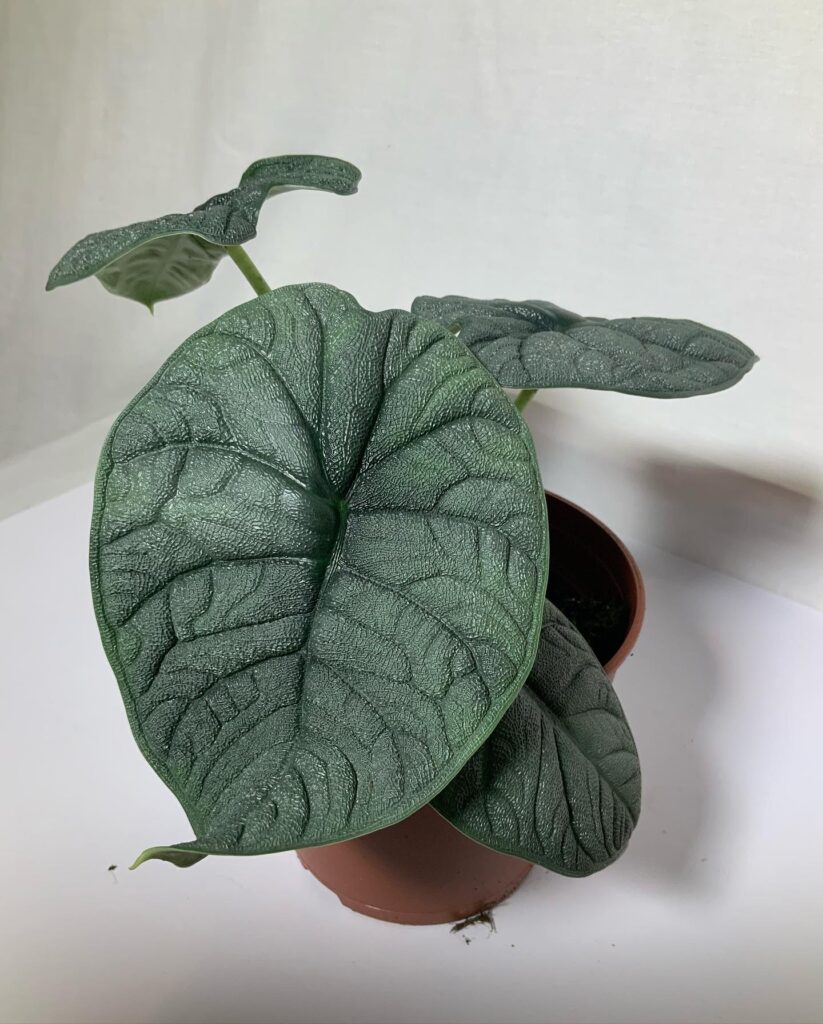No products in the basket.
Plants Blog
How to care for Alocasia?
Alocasia (also called the magician) comes from the Malay Archipelago. In our climate, it is grown as a houseplant. Its long-tailed, effectively large leaves grow straight from the rhizome. One of the most ornamental varieties of this plant is Alocasia lowii, whose glossy, dark green leaves, up to 60 cm, adorn the white veins. For proper development, the plant needs increased air humidity, so it grows best in a kitchen or bathroom, if the size of this room allows it to be placed there. It is a plant from the tropical region, so it feels good at high temperatures of about 23 – 25 degrees C. It requires fertilizing. Likes to have leaves sprinkled.
Transport
Alocases take transport very badly. If you have such an opportunity – collect your plant in person. In such a situation, acclimatization in a new place will take her much less time than after a few days’ journey in a cardboard box. After transportation, you can expect him to shed a few leaves to show his contempt for you. If you find a suitable place for your plant, try not to change it, they don’t like moving around.
A light for Alocasia
Here a lot depends on the specific species, however, most of them prefer a large amount of diffused light. Alocasia has a tendency to shed leaves after the growing season. It is worth supporting her with artificial light at this time. Without winter illumination, plants may visibly deteriorate.
What kind of background for Alocasia?
Alocases are susceptible to overflow, so you need to provide them with a permeable substrate mix. For me, a mixture of acid peat, coconut fibres and chips and perlite works great
When to water
This is the key to the happy lives of these drama queens. Water them regularly! In summer, the substrate should always be slightly damp, but not wet. In autumn and winter, you can let them dry up a bit between waterings. Alocases cannot stand overdrying or overflow. In addition, they are very open to fungal diseases and willingly shed their leaves even after gentle shedding. These plants need a substrate with an acidic pH of 5.5-6.5, they should not be watered with hard tap water. Filtered water is ideal. It will also work well when boiled and rainwater. Never water them with cold water! I successfully use water at room temperature
Air humidity
Another important factor in keeping Alocasia healthy. This plant needs high humidity, the minimum is 50%. He will enjoy the company of a humidifier and a tray with expanded clay. They tolerate sprinkling differently depending on the species, from my experience I will say that it is better to avoid it.
Temperature
They like higher temperatures, even up to 28 degrees, but with good airflow. When it is too low (below 16 degrees), the plant can throw off all its leaves. It is also very sensitive to drafts (which results in leaf shedding, of course).
Susceptibility to diseases
The list goes on. Most often you can come across fungal diseases. In addition, you can find spider mites (very often), mealybugs (often) and thrips (rather rarely) on your Alocasia.
How to care for Alocase?
If you have made your Alocasia sad and she has lost all her leaves out of sadness – don’t worry. If the plant has not been shed and the tubers are not rotten, you will likely get another chance and new leaves will sprout.

